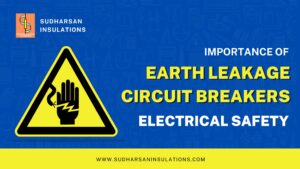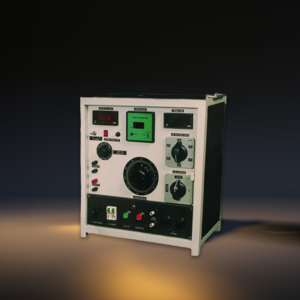Working Principle Residual Current Circuit Breakers (RCCBs)
Last Updated : June 03, 2024

Residual Current Circuit Breakers (RCCBs), also known as Residual Current Devices (RCDs), are critical safety components in modern electrical installations. They are designed to provide protection against electric shocks, fire hazards, and other potential dangers arising from earth faults or leakage currents. In this comprehensive guide, we will delve into the intricacies of RCCBs, exploring their working principles, types, applications, selection criteria, testing procedures, and strategies to mitigate nuisance tripping.
RCCB Working Principle
RCCBs operate based on Kirchhoff’s Current Law, which states that the sum of currents entering and leaving a circuit must be zero. Within the RCCB, a Core Balance Current Transformer (CBCT) continuously monitors the currents flowing through the live and neutral conductors.
In a healthy circuit, these currents should be equal and opposite, resulting in no net current detected by the CBCT. However, if an earth fault or leakage current occurs, the CBCT will sense an imbalance in the currents, indicating a potential hazard.
When this imbalance exceeds a predetermined threshold, the RCCB’s relay is activated, causing the contacts to open and interrupting the circuit, thereby preventing potential harm.
Types of RCCB
RCCBs are classified according to the types of residual currents they can detect and their time-delay characteristics. The main types are:
1. Type AC: Designed to respond to residual sinusoidal alternating currents, whether suddenly applied or slowly rising. These RCCBs are suitable for resistive, capacitive, and inductive loads without electronic components, such as immersion heaters, ovens, electric showers, and tungsten/halogen lighting.
2. Type A: In addition to detecting residual sinusoidal alternating currents, Type A RCCBs are capable of responding to residual pulsating direct currents. They are recommended for single-phase electronic equipment, appliances with electronic controls, USB socket outlets, single-phase inverters, and Class 1 IT and multimedia equipment.
3. Type F: These RCCBs are designed to trip for composite residual currents, residual pulsating direct currents superimposed on smooth direct currents, and residual currents intended for circuits supplied between phase and neutral or phase and earthed middle conductor. Type F RCCBs are suitable for frequency-controlled equipment, such as washing machines, dishwashers, air conditioning controllers with variable frequency speed drives, and Type AC and Type A applications.
4. Type B: Offering the broadest protection, Type B RCCBs are capable of detecting residual sinusoidal alternating currents up to 1 kHz, residual alternating currents superimposed on smooth direct currents, residual pulsating direct currents superimposed on smooth direct currents, and residual smooth direct currents, regardless of polarity. They are recommended for three-phase electronic equipment, inverters for speed control, UPS systems, electric vehicle charging stations, and Power Electronic Converter Systems (PECS) used in industrial machinery and cranes. Type B RCCBs are also suitable for Type AC, Type A, and Type F applications.
In addition to the aforementioned types, RCCBs can be further classified based on their time-delay characteristics:
- General Use (G-type):These RCCBs operate instantaneously, without any intentional delay, and are suitable for applications where discrimination between multiple RCCBs in series is not required.
- Selective Use (S-type): Incorporating a short time-delay, S-type RCCBs are designed to provide selectivity in circuits where multiple RCCBs are installed in series. This ensures that the RCCB nearest to the fault will trip first, preventing unnecessary tripping of upstream devices.
When Does an RCCB Trip?
An RCCB can trip in various situations, all involving an earth leakage current or insulation failure. Some common scenarios include:
- Earth faults: When a live conductor accidentally comes into contact with earth, either directly or through a conductive path, an earth leakage current can flow.
- Insulation failure: Deterioration or damage to the insulation of electrical cables or equipment can lead to leakage currents to earth.
- Appliance faults: Faulty appliances or electrical devices with compromised insulation may also cause earth leakage currents, triggering an RCCB trip.
It’s important for an RCCB to trip promptly in these situations, as prolonged exposure to leakage currents can pose a serious risk of electric shocks or fires.
According to established safety standards, the maximum permissible current through the human body is 30mA for durations exceeding 30 milliseconds. By tripping at lower leakage current thresholds, RCCBs effectively limit the potential bodily current to safe levels, preventing harmful or even fatal electric shocks.
Mitigating Nuisance Tripping
While RCCBs are designed to trip in the presence of hazardous residual currents, certain conditions can lead to nuisance tripping, causing inconvenience and potential safety concerns. Common factors contributing to nuisance tripping include:
1. Standing Leakage Currents: Electronic equipment, such as computers and printers, can contribute to continuous leakage currents that accumulate and potentially trigger the RCCB. Proper sectionalizing of circuits and selecting RCCBs with appropriate residual current sensitivity can help mitigate this issue.
2. Harmonics and High-Frequency Leakage Currents: Some types of loads, particularly electronic equipment with switch-mode power supplies, can introduce harmonics and high-frequency leakage currents into the circuit, causing RCCBs to trip unnecessarily.
3. Transient Residual Currents: Switching operations, such as turning on or off equipment, can generate transient residual currents that may exceed the RCCB’s sensitivity threshold, leading to nuisance tripping.
4. Surge Currents: Lightning strikes and switching surges can produce high-amplitude residual currents, potentially causing RCCBs to trip unexpectedly.
To address these challenges, several strategies can be employed:
1. Proper Sectionalizing: Dividing circuits into smaller sections and installing individual RCCBs for each section can help distribute the leakage currents and reduce the likelihood of nuisance tripping.
2. Selective Use of RCCB Types: Choosing the appropriate RCCB type based on the load characteristics can minimize nuisance tripping caused by specific types of residual currents. For example, Type A RCCBs are better suited for electronic equipment, while Type B RCCBs are recommended for applications with significant DC currents.
3. Time-Delayed RCCBs: Selective Use (S-type) RCCBs with short time-delays can provide selectivity in circuits where multiple RCCBs are installed in series, ensuring that the device nearest to the fault trips first and preventing unnecessary tripping of upstream devices.
4. Special RCCB Models: Some manufacturers offer specialized RCCB models with advanced features designed to avoid nuisance tripping caused by harmonics, high-frequency currents, switching transients, and lightning surges. These models often incorporate filters or algorithms to differentiate between hazardous and non-hazardous residual currents.
5. Proper Installation and Grounding: Ensuring proper installation practices, including adequate grounding and adherence to wiring standards, can minimize the effects of electromagnetic interference and other factors that contribute to nuisance tripping.
It is essential to consult with qualified electrical professionals, follow manufacturer recommendations, and adhere to relevant standards and regulations when selecting, installing, and maintaining RCCBs to ensure optimal performance and minimize nuisance tripping.
Testing RCCBs
Periodic testing of RCCBs is crucial to ensure their proper functioning and maintain electrical safety. Two common methods for testing are:
1. Test Button: Most RCCBs are equipped with a test button that simulates a fault condition by generating a test current. By pressing this button, the RCCB should trip, indicating its ability to detect and respond to residual currents.
2. Multifunction Tester: Specialized testers, such as multifunction testers, can perform comprehensive testing of RCCBs by measuring the tripping time for various residual current levels, as specified in the relevant standards. These testers can verify the RCCB’s compliance with maximum break time and non-actuating time requirements for different types of residual currents.
Regular testing of RCCBs, as recommended by manufacturers and regulatory bodies, is essential to identify any potential issues and ensure the continued protection of electrical installations.
Conclusion
Residual Current Circuit Breakers (RCCBs) play a vital role in ensuring electrical safety and protecting against electric shocks, fire hazards, and other potential dangers arising from earth faults or leakage currents.
By understanding their working principles, types, applications, and selection criteria, as well as implementing proper testing procedures and strategies to mitigate nuisance tripping, electrical installations can be made safer and more reliable.
Regular maintenance, adherence to standards, and consultation with qualified professionals are key to maximizing the benefits of RCCBs and ensuring the safety of electrical systems.




